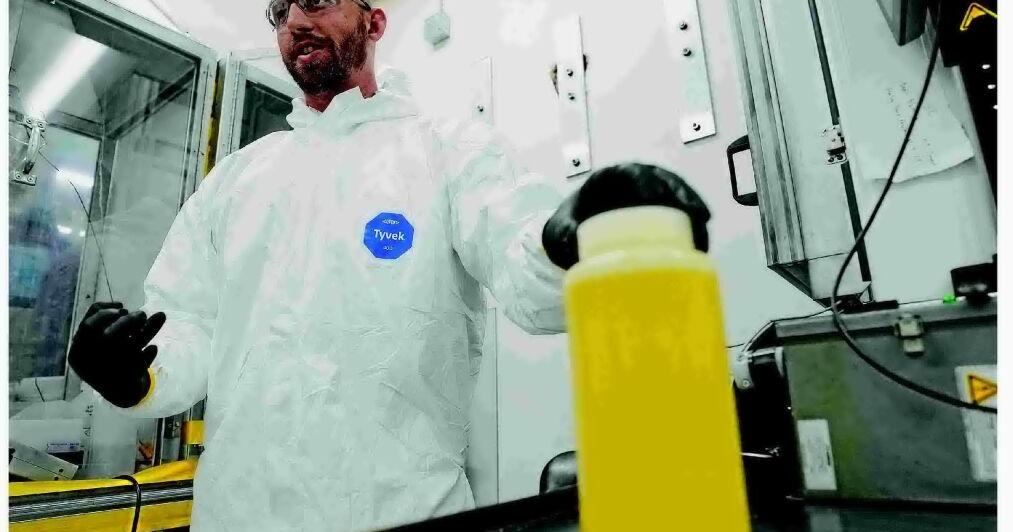
A new era of nuclear power is on the horizon as the United States ramps up production of advanced reactor fuel. At the Oak Ridge National Laboratory, workers from the nuclear power company X-energy have begun creating specialized fuel in the form of small, gray spheres known as “pebbles.” These pebbles contain thousands of tiny black kernels enriched with uranium, designed for a new generation of nuclear reactors. The initiative aligns with federal goals to significantly increase domestic nuclear power production, a move highlighted by previous President Donald Trump’s ambition to quadruple output by 2045.
At the heart of this effort is a new fuel fabrication facility under construction in Oak Ridge, Tennessee. The facility, which has an estimated cost of nearly $2 billion, marks the first such development in the U.S. in more than 50 years. X-energy is not alone in this venture; other companies like Standard Nuclear and Orano are setting ambitious targets for uranium enrichment and fuel production, indicating a growing momentum in the nuclear sector.
Innovative Fuel Production
A recent tour of the laboratory revealed the intricate process behind the production of TRISO fuel, a promising nuclear fuel type. Workers must adhere to strict safety protocols, including wearing protective gowns and gloves, when handling materials in areas marked by radiation warnings. The initial phase involves creating a uranium solution that resembles “dark yellow lemonade.” This mixture undergoes a series of transformations, solidifying into small spheres that are then coated for protection.
According to Dan Brown, vice president of fuel development for TRISO-X, the final product is robust enough to withstand extreme conditions. The pebbles are designed to be used in high-temperature gas-cooled reactors, with each reactor requiring about 220,000 pebbles, which can be reused multiple times for energy generation.
Despite the ambitious plans, there are challenges ahead. The U.S. currently lacks any commercially operational next-generation reactors, and previous constructions have faced significant delays and budget overruns. The two reactors built in Georgia have been completed years later than scheduled, costing at least $17 billion over projections. Critics argue that the high costs and risks associated with nuclear projects could undermine the viability of expanding the nuclear sector. “Without a substantial decrease in construction costs, it’s not worth the avoided greenhouse gas emissions,” stated David Kemp, a policy analyst at the Cato Institute.
Strategic Goals and Future Prospects
The push for advanced nuclear reactors is part of a broader strategy to enhance energy independence and reduce reliance on foreign fuel sources. The Department of Energy has indicated that next-generation reactors will utilize high-assay low-enriched uranium (HALEU), a type of fuel that allows for longer operation and potentially more efficient energy production. Currently, only Russia and China possess the infrastructure for large-scale HALEU production, but Centrus Energy recently produced the first 20 kilograms of HALEU in the U.S. in over 70 years.
Experts from the Nuclear Energy Institute suggest that if proper measures are taken now, the necessary fuel for new reactors could be ready to meet rising electricity demands. J. Clay Sell, CEO of X-energy, emphasized the importance of solving the fuel supply issue to ensure that reactor development can proceed unimpeded. The company has received funding from the Energy Department and investment from Amazon, aiming to bring over 5 gigawatts of new power projects online by 2039.
X-energy has submitted an application to the U.S. Nuclear Regulatory Commission (NRC) to license its new fabrication facility, with several other companies expressing interest in developing advanced reactor fuel. With plans for the first factory to be operational by late 2027 or early 2028, X-energy aims to produce enough fuel for 11 reactors at full capacity. A second facility could follow by late 2029, potentially increasing production fourfold.
As the nuclear industry stands on the brink of transformation, opinions vary on the prospects for its future. Joel Duling, president of TRISO-X, remarked, “This isn’t a renaissance. This is a game-changer.” The outcome of these initiatives will play a crucial role in the landscape of energy production in the years to come.






